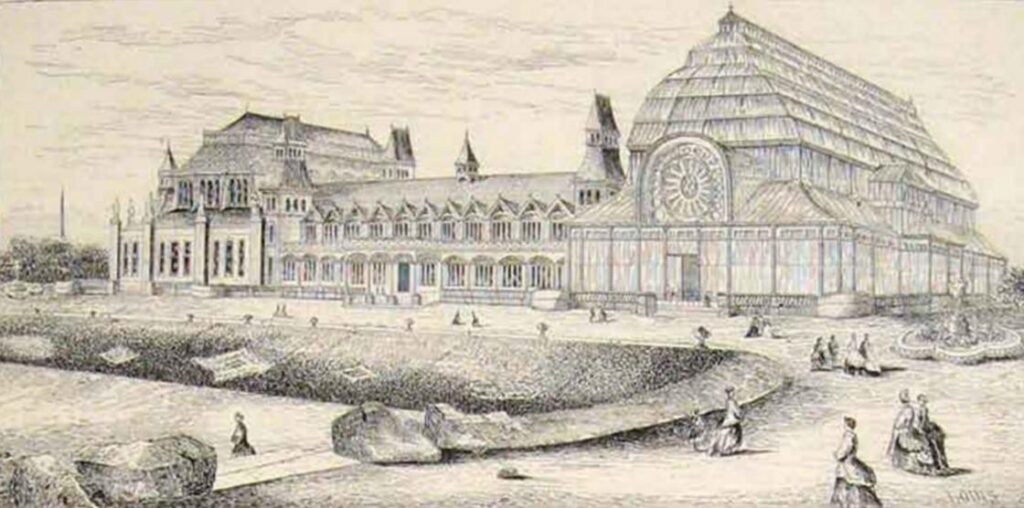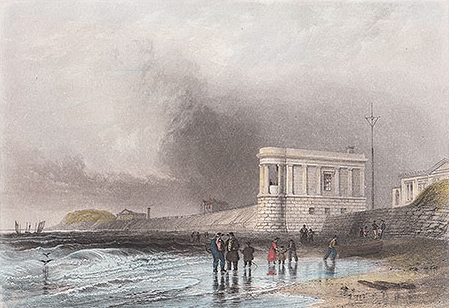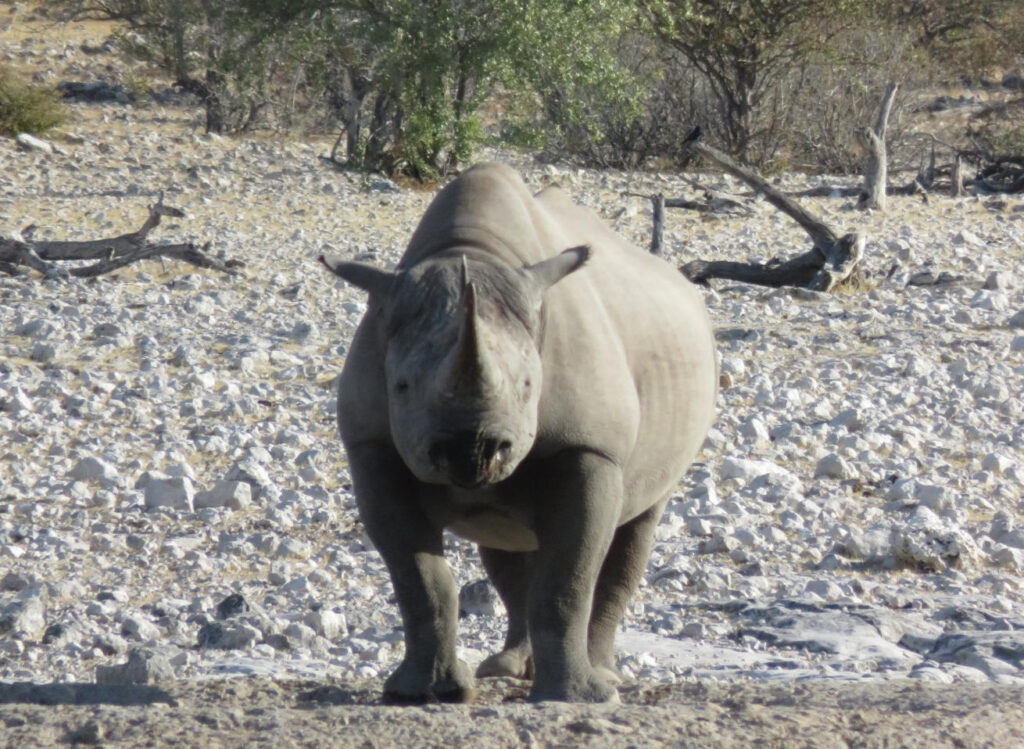Introduction
Welcome to Forum 45 (July 2023).
I write this having just attended Peter Firth’s entertaining talk on ‘The University Extension Movement in Southport 1874-2024’. Peter will be contributing something for the next Forum for those of you who were unable to attend. As 2024 will mark the 150th anniversary of the Movement’s first activities in Southport, various special events are being planned, so watch this space!
This issue of Forum lists the SUES programme of courses and talks for next year (2023-2024). Please put the dates in your diary.
Also in this issue, we have a report from Roger Mitchell on Michelle Caldwell’s recent talk on Victorian Visitors to Southport. Martin Perry has contributed an article in which he discusses some of Southport’s early buildings, including his own neighbourhood in Aughton Road. Finally, inspired by a recent holiday in Namibia, I have written a short piece on the rhinoceroses of Africa.
As always, we welcome contributions to Forum from SUES members. Furthermore, if you want to respond to, or comment on, anything in Forum, that would be very welcome. My contact details are on the last page.
Forum will be taking a break in August so the next issue (Forum 46) will be with you in September. Meanwhile, may I wish you a healthy and happy summer break.
Chris Nelson
Meols Hall Visit
Thursday 31st August 2023, 2.30pm.
Visit to Meols Hall, Botanic Road, Churchtown (opposite the Botanic Gardens)
We will meet at Meols Hall at 2:30 pm. After the visit we will walk to the nearby Hesketh Arms for refreshments (a small pudding and hot drink, or just a drink if you prefer).
The total cost for the visit and refreshments will be £12 (pay on the day), and a full-colour guidebook will be available for an additional £5. To register for the visit please email or phone Mary Ormsby (mormsby@btinternet.com), preferably before 17th August.
Membership Renewal for 2023-2024
Rob Firth, our Membership Secretary, will be contacting all members in August with information on how to sign up for a further year of SUES membership. We hope that you will renew your membership (it really is extraordinarily good value for money) and perhaps encourage a friend to join us too in this special 150th anniversary year.
SUES Programme 2023-2024
Single Session Lectures and Events
Friday 15th September 2023
Emma Copestake – Liverpool’s Dock Community During the National Dock Labour Scheme of 1967-1989
Friday 27th October 2023
Eric Woodcock – ‘Lankie Lekkies’ – Electric Vehicles from the 1880s to Present Day
Friday 8th December 2023
Ed Montana-Williams – Turner and Constable, Rivals for Greatness
Friday 26th January 2024
Robert Eden – Bugs Everywhere – From Stinky Ponds to Cracked North Sea Pipelines
Fri 23rd February 2024
Julia Clayton – The Fiction of Forgery: Art and Authenticity in the English Novel
Friday 22nd March 2024
Stephen Lloyd – Shakespeare, the Earls of Derby and the North West
Friday 26th April 2024
Alan Crosby – Providing Elementary Education in Victorian Lancashire
Friday 12th July 2024
SUES Annual General Meeting
Courses
Peter Firth – Medieval Bookends (£50)
2023: 25th Sept., 2nd, 9th, 16th, 23rd & 30th Oct., 6th, 13th, 20th & 27th Nov. (all Mondays)
Roger Mitchell – Colonial & Post Colonial America (£40)
2024: 8th, 15th, 22nd & 29th Jan., 5th, 12th & 26th Feb., 4th March (all Mondays)
Alan Potter – Technology – How Things Work! (£30)
2024: Mon 8th, Thurs 11th, Mon 15th, Thurs 18th, Mon 22nd & Mon 29th April
Peter Firth – The University Extension Movement (Free)
2024: 13th & 20th May, 3rd & 10th June (all Mondays)
Victorian Visitors to Southport – Michelle Caldwell
A report on the meeting held on 23 June 2023
Our June talk was given by Michelle Caldwell, who had organised a very successful exhibition last year at the Atkinson on this same topic. An early summer date was appropriate for a lecture which celebrated the rise of Southport as a holiday resort during the Victorian period and Michelle presented us with a cast list of household names, the great and the good of Victorian England. For politicians we had both William Ewart Gladstone and Winston Churchill. Gladstone seemed to have had the easier ride because Churchill’s speech was interrupted by suffragettes, not to mention a ventriloquist. The woman who organised this demonstration was Dora Marsden, who broke into the Empire Theatre, hoisted herself into the cupola and then waited for 15 hours before Churchill’s arrival.
Most of the major literary figures of the period seem to have found their way to Southport at some point. We started with Mrs Gaskell who spent the winter of 1848-1849 in Southport, accompanying an invalid friend. Charles Dickens ‘probably but not certainly’ visited en route from Liverpool to Blackpool. Oscar Wilde, Arthur Conan Doyle and Rudyard Kipling all provided entertainment and/or education and it was interesting to note that the best seats for an afternoon lecture at the Winter Gardens on ‘Dress’ by Oscar Wilde cost six shillings, a not insubstantial amount.

On another occasion Wilde lectured on his experiences in America and Michelle included a number of Americans among her visitors. Buffalo Bill and P.T. Barnum brought different kinds of exotic entertainment and Barnum, having been recently widowed, found himself a new wife in Southport. She was the daughter of his friend, John Fish, a cotton manufacturer who had retired to Southport. Nancy was 40 years younger than her new husband, but the marriage seems to have been a happy one.
I enjoyed being introduced to two of the greatest of American writers, Nathaniel Hawthorne and Herman Melville, whose last meeting was for a long walk by the sea in Southport. It does not sound to have been a particularly joyous experience. Hawthorne, who had been appointed American Consul in Liverpool, chose to live in Southport to improve his wife’s health and to avoid having to entertain and be entertained in Liverpool but he did not enjoy the experience. He summarised his experience thus.
“Southport is as stupid a place as ever I lived in, and I cannot but bewail an ill fortune, to have been compelled to spend these many months on those barren sands.”

It is perhaps worth noting that Herman Melville only stayed for 2 days before moving on.
Michelle’s visitors from around the turn of the century included both General William Booth of the Salvation Army and Sigmund Freud, whose half-brother lived in Southport. Just suppose that the two of them had set off together for a walk along the sands. What a fascinating conversation that would have been.
Michelle was rightly cautious about claiming the future French Emperor, Napoleon III, as a Southport resident, but he probably was a visitor when he stayed with the Gerard Family at New Hall, Garswood in the 1840s. She did, however, confirm that a future British monarch was a visitor in 1898. Three years before he succeeded to the throne as Edward VII, the Prince of Wales came to Southport to inspect the Lancashire Hussars. His speech would have won him more friends than Nathaniel Hawthorne’s complaints and it might almost have been written for him by Southport’s tourist office. He praised Southport’s exceptional railway links, described the town as “attractive to all those who are in search of health” and finally drew particular attention to the resort’s “superiority of climate and excellence of its sanitary arrangements”. Who could ask for anything more?
Michelle’s talk was illustrated with portraits of her visitors and some delightful and well- chosen pictures of Victorian Southport. Alan gave a well-deserved thank you to Michelle and there were a number of questions. Discussion continued over refreshments before we sallied forth into 21st century Southport, happy that some of that Victorian style and all those excellent sanitary arrangements remain for modern visitors to enjoy.
Roger Mitchell
Early for Southport… A Bit of Local History
Very few of Southport’s buildings survive that can be dated before 1850. There is Wellington Terrace at the beginning of Lord Street, re-fronted in 1818, but hiding behind the façade are earlier fishermen’s cottages. In Liverpool Road, Birkdale, there is a single thatched cottage which is 18th century or earlier.
Churchtown, which was the much older settlement of North Meols, has several cottages of indeterminate date. These cottages were repaired and repaired again, so the date of their original construction is blurred. Meols Hall, of course, has parts which are much older than the 19th century, and even some of the bricks may have been reused from earlier structures. Anything pre-1850 is ‘Early’ for Southport.
In Aughton Road, Birkdale, there is a terrace of three brick-built houses, nos. 6, 8 and 10 (we live in 8 and 10), and they have an unusual history. Nos. 6 and 8 were built as Southport’s first railway station – there is a photograph of this pair on the wall in the waiting room at Birkdale station with that caption, or at least that title has recently been changed to “Birkdale Park Station, c.1860”. They date from about 1845, and interestingly they have railway station fretwork to the front porches. They were built for the station master and his assistant, and in no. 8 is a large internal lead-lined water tank, just below the eaves. This would have been the water supply, fed from the roof gutters, for this pair of simple dwellings.
Aughton Road is named after John Aughton. He had previously worked with his father as builders/developers in Fleetwood for Sir Peter Hesketh-Fleetwood. Sir Peter was the brother of Rev. Charles Hesketh, Rector of North Meols. He had speculated that the land he owned in Fleetwood could be a boom town and port to rival Liverpool. He invested large sums of money in buildings of appropriate grandeur, some of which are still there. Unfortunately, the railway that he was promised failed to arrive in time, and he became bankrupt. He had employed the celebrated architect Decimus Burton and the father-and-son team, the two Aughtons, to deliver his vision for Fleetwood.
When Sir Peter’s Fleetwood development collapsed, the now experienced John Aughton (the younger) moved to Birkdale. He foresaw that Birkdale and Southport would have a very rosy future. In due course, he built a villa for himself and his family at 11 Aughton Road (now in flats). He named it Vanbrugh Villa which reinforces his architectural experience in Fleetwood. John Aughton was the driving force, the builder and developer of the early parts of Birkdale Park, which are the houses in Lulworth Road, Westcliffe Road and other roads around St James’ Church, Birkdale. He needed to bring in large quantities of building materials, and a single-track railway ran diagonally across Holybrook Road to nos. 6 and 8 Aughton Road, and then into land opposite his villa, which became his builder’s yard. Later, this land housed a late Victorian house at the front, and riding stables where Red Rum spent part of his time, all now in residential use.
On the other side of the road, next to his villa, John Aughton built a substantial workshop. It is still there, with a small corner used until very recently as a joinery workshop. A few doors down the road, John built a terrace of dwellings to house his workmen at Southern Terrace.
While nos. 6 and 8 were used as a railway station, a couple of years later, in about 1840, the adjacent no. 10 was built to form a terrace of three – all simple artisans’ dwellings. In the 1860s, the owner of no. 10 must have felt something grander was needed, so built an extension and moved the front door away from its terrace origin. Next door, built at right angles to the road, is 12 Aughton Road, dating from 1840 or earlier; it was built as an academy for the education of young gentlemen, and probably young ladies shortly after. In our garden at no. 10 I found, with a metal detector, the iron bases for posts for tennis nets, no doubt for the young ladies at Willow Bank Academy. All ‘Early for Southport’.
Martin Perry
Black and White Rhinoceros –
A Matter of Colour, or Confusion?
In April this year, Siobhan and I visited Namibia and enjoyed several safari drives. Having failed to see a rhinoceros on a previous African safari holiday, we were lucky enough on this trip to see both of southern Africa’s species of rhinoceros: the black rhinoceros (Diceros bicornis), which we spotted at a waterhole in Etosha National Park; and the southern white rhinoceros (Ceratotherium simum), which we saw further south, at a reserve in the Namib desert. Both species are under threat, due to a combination of habitat loss and poaching; sadly, their horns are still much sort-after for use in traditional Asian medicine. However, we were relieved to find that all the animals we came across had their horns intact, as you can see in the photographs.
It was immediately apparent to us that both ‘black’ and ‘white’ rhinoceroses are actually grey. How, therefore, did they get their common names? Apparently, it’s a frequently asked question, and one that our excellent driver and tour guide was happy to answer. His explanation has been corroborated by information I later found on the WWF website.
The southern white rhinoceros is a grazer and its habitat is savanna/grassland, mostly in South Africa, Namibia, Zimbabwe and Kenya. Having been almost extinct in the late 19th century (fewer than 100 animals were counted in 1895), there is now a population of approximately 18,000 after careful management over many decades. It is the only species of rhinoceros that is not endangered, and now has an official status of ‘Near Threatened’.
As a grazer, the white rhinoceros has a mouth adapted for this purpose with a wide, almost square, upper lip. Its common name comes from the Afrikaans word weit, meaning “wide”, referring to its mouth. It seems that early English-speaking settlers misunderstood this and began referring to the “white” rhinoceros.

The black rhinoceros lives in semi-desert savanna, woodlands, forests and wetlands. It feeds mainly on leaves on bushes and trees and does not generally eat grass or other low-growing vegetation. Our driver stopped in the desert to show us a poisonous succulent plant, Euphorbia virosa. Its milky sap was traditionally used for poison darts, and it is highly toxic for humans, and practically all other animals, except for the black rhinoceros, which eats it!
As a browser (not a grazer) the black rhinoceros has a very differently shaped mouth, with a pointed lip, by which it is easily recognised and distinguished from the white rhinoceros. And why is it called the “black” rhinoceros? Simply because it’s not the white one, apparently!

Sources:
https://www.wwf.org.uk/learn/fascinating-facts/rhinos
https://www.worldwildlife.org/species/white-rhino
https://www.worldwildlife.org/species/black-rhino
Chris Nelson
Contacts
Chair: Alan Potter
alanspotter@hotmail.com
07713 428670
Secretary: Roger Mitchell
rg.mitchell@btinternet.com
01695 423594 (Texts preferred to calls)
Membership Secretary: Rob Firth
suesmembers74@gmail.com
01704 535914
Forum Editor: Chris Nelson
chris@niddart.co.uk
07960 117719
Facebook: facebook.com/groups/southportues
See our archive for previous editions of the SUES Forum!